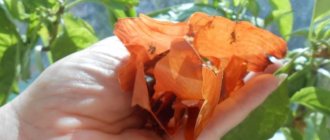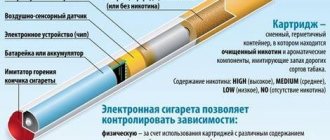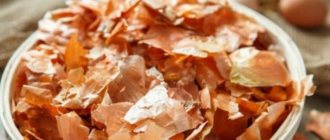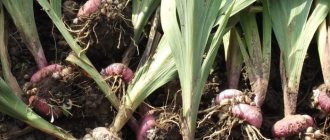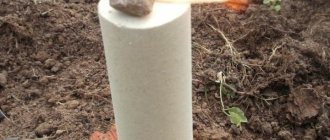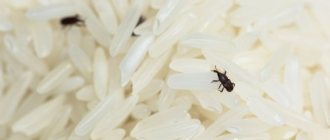Processing a greenhouse in the fall is an important process on which the yield in the coming season depends. Some gardeners limit themselves to digging and removing plant debris. As a result, it leads to seedlings being damaged by diseases and pests.
Autumn treatment of the greenhouse includes washing the structure, cleaning and infection control. After harvesting, it is important to prepare the land for spring planting. After reading the article to the end, you will learn in what sequence you need to act, how and with what to destroy insects, water the soil, and spray the walls.
Cleaning plan
The greenhouse is processed in the fall according to the plan:
- Clear the beds of plant debris.
- Remove the top layer of soil or disinfect.
- Inspect and clean the walls and roof. Seal with sealant, replace glass with cracks.
- Wash the greenhouse and equipment.
- Dig up the beds and remove weeds.
- Disinfect the room.
Upon completion of the work, the structure is dried, ventilated and closed for the winter.
If the greenhouse is film, the material is removed in the fall, disinfected, and stored. Then the frame is processed: the wooden frame is cleaned of dirt, impregnated with a primer, and painted if necessary. Metal is checked for chips and rust. These places are sanded with sandpaper and covered with paint.
Why treat a greenhouse in the fall?
This question could be called stupid if it were not for its obviousness. Naturally, because every gardener must remove all unnecessary things from his garden. Typically, autumn garden care requires a special calendar of work: the greenhouse is processed not only in the fall, but also in the spring. In the fall - in order to prepare the room for winter. Proper treatment of the greenhouse will help not only get rid of harmful insects and diseases, but will also significantly save time in the spring: you will not have to do work when you need to plant young trees as soon as possible.
Garbage collection
The first stage of work is harvesting the tops.
Harvesting is carried out in early autumn, immediately after harvesting. Aboveground and underground parts of plants are removed, the pins are removed. The collected waste, ropes and wooden stakes are burned. They are not suitable for reuse as they contain a lot of bacteria.
If the tops are free of diseases and pests, they are sent to a compost pit. The furrows are cleared of debris, weeds are pulled out, and the flooring is repaired.
Digging
If it is not possible to completely replace the soil in the greenhouse, it should be dug up using a shovel full. Roots of plants, especially tomatoes, should be completely removed from the greenhouse, as they contain a large number of late blight spores. You also need to remove all wooden crossbars, pins and supports from the greenhouse, since wood can be a breeding ground for fungus and rot. When loosened, the soil is saturated with air, so the fertilizer can penetrate even into previously compacted areas of the soil.
What to sow in early spring in a greenhouse in order to have time to harvest before the main plantings
Construction and inventory
The second important task of autumn is to prepare the structure and equipment for the upcoming season.
Cleaning
It is most convenient to process a greenhouse made of polycarbonate and glass in the fall. The walls and roof can be washed thoroughly without rushing. Chemicals that get into the soil will decompose before spring and will not harm young plants.
To treat the walls of the greenhouse, prepare a solution from a grated piece of laundry or tar soap and a bucket of hot water. Coatings are cleaned inside and out with a sponge or cloth soaked in a solution. Contaminated areas are treated with a brush. Then the soap is washed off with water from a hose.
Cleaning is best done in dry, cloudy weather.
The tools that were in the greenhouse are also put in order in the fall. They are washed and dried. If necessary, they repair and paint the cuttings.
You can disinfect garden tools with chlorhexidine or bleach solution. It is also used to process corners, joints, and small parts of the greenhouse. Plastic containers and tanks are washed and rinsed with copper sulfate, then dried.
Disinfection
It is necessary to disinfect both the soil and the structure of the greenhouse.
For high-quality treatment, everything unnecessary is removed from the greenhouse, leaving bare walls. Internal, auxiliary systems are removed and taken out. If the greenhouse is new, disinfection is carried out with a hot solution of soda ash (1 tablespoon of powder per 2 liters of water), green soap, 1% solution of Bordeaux mixture (unpainted structures). Heavy stains are removed with mustard powder. Dip a damp sponge into the product and treat the surface.
Preparations suitable for autumn treatment of old greenhouses:
- Cutting sulfur. The crystals are mixed in equal proportions with charcoal and scattered on metal baking sheets. The blanks are placed evenly throughout the greenhouse and set on fire. The room is closed and left for 3–4 days. Then ventilate. You cannot use sulfur cuttings in a greenhouse with a metal frame.
- Copper or iron sulfate . 100 g of powder is dissolved in 10 liters. For work, take a sprayer, sprinkler or spray bottle.
- Potassium permanganate . After dilution, the solution should acquire a bright pink tint. They treat surfaces using a spray gun or brush.
- Bleaching powder. 400 g of the drug is dissolved in 10 liters of water. Leave for 4 hours. Drain the liquid from the sediment and spray the interior space. After the procedure, the greenhouse is closed for 4–5 days. If you don’t have bleach, you can use quicklime or whitewash.
- Sulfur checker. Suitable for polycarbonate structures and glass structures with wooden frames. Cannot be used for processing metal parts. The checker emits sulfur dioxide, which upon contact with liquid is converted into acid. Getting on metal leads to corrosion that cannot be stopped.
If the greenhouse is old or disinfection has not been carried out for a long time, formalin is taken for treatment. A potent drug kills all microorganisms on the surface.
Disinfection of a greenhouse in spring
Preventive work on cleaning and disinfecting a greenhouse in the spring is no different from the autumn and includes the same steps: cleaning and washing; disinfection of metal frames; coating it with anti-corrosion; disinfection of the coating with phytosporin; soil disinfection with slaked lime or copper sulfate solution (3-5%).
Solutions for disinfecting coatings
To protect the coating from mold, moss and other troubles, use a strong solution of potassium permanganate or a solution of chlorine of lime.
Frame disinfection solutions
If the greenhouse is unpainted, use 1% Bordeaux mixture (spraying) for disinfection. A solution of potassium permanganate, formaldehyde, copper sulfate and quicklime also do a good job of this.
Fumigation with sulfur bombs
This method is toxic, but effective. But remember that they cannot be used in greenhouses with a metal frame or an unpainted frame. Use the checker strictly according to the instructions: about 9 checkers are suitable for a small greenhouse 3*6. They have a wick. Place the checkers strictly in all corners of the greenhouse on surfaces that prevent combustion. Close all the windows and doors so that not even a particle of air gets in. Then light the wick. Approximate smoldering time is 5 hours. After the checker has decayed, leave it for three days. Afterwards, ventilate the room well and wash the inside with a soap solution.
Fumigation with tobacco sticks
In principle, the method is almost no different from using sulfur bombs, just remember that the best effect can be achieved in a humid environment. Therefore, spray the soil and interior surface with water before use. Next, proceed to fumigation:
- Seal the room.
- Place checker stands in the corners: bricks or metal utensils.
- Light the wick outside and wait a minute. Then bring the checker into the greenhouse and place it on a stand.
- Wait a few hours and then ventilate the room.
Tillage in a greenhouse
In the fall, the soil in the greenhouse is disinfected and dug up.
After cleaning the room, the top layer of soil is replaced. To improve soil fertility and increase yield, it is enough to remove 10–15 cm of soil. If the soil is contaminated, remove 20–30 cm. The procedure is carried out every 3 years.
The event is labor-intensive, so many do without it. If there is no infection or many pests in the greenhouse, the beds are treated with chemicals.
Methods
There are several ways to cultivate soil in a greenhouse:
- folk remedies;
- antibacterial drugs;
- broad-spectrum fungicides.
They can be used together or separately. Each has its pros and cons.
Homemade Recipes
By using folk remedies to cultivate land in a greenhouse, you can be sure of obtaining an environmentally friendly harvest.
To disinfect soil in a greenhouse in the fall, use the following solutions:
- The bucket is half filled with onion peels. Fill with boiling water to the brim and leave for 2 days. Treat the ground and polycarbonate surface.
- Boil a kilogram of tansy in 10 liters of water for a quarter of an hour, then cool. The solution is spilled into the beds and the walls are sprayed. Helps fight spider mites and whiteflies.
- A kilogram of lemon peels is crushed, placed in a three-liter jar and filled with liquid. They insist for a week. For treatment, 120 ml of infusion is dissolved in a bucket of water. Used for watering the soil and spraying greenhouse surfaces.
The proposed recipes are suitable for mild infestation by harmful insects.
Useful video about a means for disinfecting a greenhouse in the fall
Ready-made products
The most popular among gardeners are biological products containing microorganisms. Their advantages include: safety for people and plants, positive effect on soil structure, preservation of soil bioflora after treatment. Use biological agents in warm, cloudy weather.
Ready-made products for greenhouse disinfection
There are various types of biologics available on the market. The most effective:
- Alatar protects against insects. For 10 liters of liquid you will need 5 ml of product.
- Baikal-Em1. Add half a cup (100 ml) of concentrate to a bucket of water.
- Means Maxim. The proportion of liquid and drug is 3:1.
- Fitosporin. 6 ml of solution is combined with 10 liters of water.
- Trichodermin is used against the spread of rot. For the master composition, a pack of powder is slowly mixed with 1 liter of warm water. The mixture is kept in a warm place for 2 hours, then used to treat the soil in the greenhouse. The solution is prepared from 100 ml of the drug and 10 liters of liquid. The suspension is suitable for use for 6 hours;
- Alirin-B. The tablet is dissolved in a bucket of water.
Biological products help decompose organic residues, enriching the soil with useful microelements.
You can treat a greenhouse in the fall against diseases with colloidal sulfur or peracetic acid. The products will protect plants from scab, powdery mildew and rust. After treating the greenhouse walls, lichens and moss will disappear.
Sometimes more serious means are required to disinfect the soil. For example, when constructing a greenhouse on obviously contaminated or new land. Here chemicals will come to the aid of the gardener. They will not only destroy dangerous microorganisms, but will also allow you to do without replacing the soil.
Handling such mixtures requires caution and the use of personal protective equipment.
Table: chemical preparations for autumn treatment of the greenhouse after harvesting:
| Means | Mode of application |
| Formalin | Watering the soil and spraying the walls with a solution (1 liter per 100 liters of water) |
| Iprodione 2% | Adding 100–150 g per 1 m² to the soil for digging |
After treatment, the greenhouse is closed for 2 weeks so that the drug has the maximum effect on infections and harmful insects.
How to till the soil before planting tomatoes
If you grew tomatoes in a greenhouse last season, and even more so if the tomatoes were affected by late blight, the greenhouse substrate requires special treatment in addition to disinfecting the soil:
- Remove the top layer of soil, replace it with fresh - uninfected and fertile.
- Plant green manure - alfalfa, mustard, oats, rye. These plants help disinfect the soil, saturate it with nitrogen, loosen and soften the soil.
- To make the substrate loose and breathable, sift it through a sieve and add humus or vermicompost.
- If necessary, do deoxidation in the fall: per 1 m2 - 500 g of lime.
garden cultivation
I practice crop rotation in greenhouses as much as possible. One year I plant tomatoes, another - cucumbers. If after the tomatoes it’s the pumpkin’s turn, I carry out another treatment:
- I replace the top layer of soil with fresh black soil.
- I add a bucket of rotted manure for every 1 m2.
- I disinfect the removed soil and mix it with humus or compost approximately 1:1.
- In the fall, before frost, I plant greenhouse beds with green manure - oats, peas, phacelia, rapeseed.
- In winter, I go to the garden and cover the greenhouse soil with snow: this not only promotes freezing, but also provides sufficient moisture in the spring.
- If necessary, I deoxidize the soil: per 1 m2 - 200 g of lime, 300 g of dolomite or 350 g of ash.
What pest control products are used?
Treating your greenhouse before winter is a good way to kill larvae and pests. Insects are tenacious and reproduce quickly. If you leave them overwinter, they are guaranteed to ruin the harvest next year.
Description of common greenhouse pests
Pests will overwinter in the greenhouse if it is not treated.
Most often found in a greenhouse are:
- The bear eater is a large insect that lives in the ground. It feeds on all plants that gardeners grow. The larvae gnaw the root system. Adults eat roots, stems, and fallen fruits. The length of the insect reaches 5 cm, thickness - 1.5 cm. Color - brownish-brown.
- The armyworm is a nocturnal pest. Cutworm caterpillars eat tomatoes, cabbage, eggplants and peppers. Length – 30 mm. The color may be brown or green. After birth, the caterpillar immediately begins to eat. Young individuals are weeds, and older ones crawl onto the cultivated plant.
- Wireworm is the larva of a click beetle that destroys tomatoes, eggplants, and peppers. Length 1.5 cm. Color – yellow-brown. It eats away the core of the stem, damaging the above-ground and underground parts of the crop.
- Spider mite . The insect harms all vegetable crops. The adult body is green. Length – 0.5 mm. Females overwinter in the cracks of greenhouses and in the ground. In the spring they move to seedlings, laying eggs on the underside of the leaves. The leaf becomes covered with cobwebs and dries out, the plant dies.
- The whitefly butterfly is a threat to greenhouses. Looks like a miniature white moth. The insect spreads en masse throughout all plantings and leads to the death of bushes.
- A nematode is a small worm that feeds on the root system of greenhouse crops. Releases toxins that form growths on the roots. The plant does not receive enough nutrients and dries out.
- Thrips . The insect has an oblong body and two pairs of wings. Length – 2 mm. Larvae and adults feed on the undersides of leaves. The damaged area dries out and an irregularly shaped hole forms in its place.
- Green aphid . Eats young shoots, flower and leaf buds. The danger lies in lightning-fast reproduction. Due to the defeat, the bushes become deformed, buds, peduncles and ovaries fall off.
- Slugs . They damage the soft tissue of the plant and eat away the fruits. A sign of being in a greenhouse is a shiny mark on the walls and ground.
Pest Control Products
The safest method of processing a polycarbonate greenhouse is thermal. The beds are watered with boiling water and covered with film for two days. During the fall, the procedure is repeated 3 times. Exposure to high temperatures kills germs and pathogenic bacteria.
Table: effective ways to treat a greenhouse against pests in the fall:
| Insects | Standard method of control | In case of severe infection |
| Aphids, whiteflies, caterpillars, thrips, spider mites, wireworms | · destroy plant remains and debris in the greenhouse; · remove mulch; · wash the greenhouse with soapy water; · treat the land and structure with Karbofos | · use a smoke bomb; · leave the windows open to freeze the top layer of soil |
| Slugs, mole cricket | · clean the greenhouse from pollution and plants; · spill the soil and nests with boiling water to a depth of 30 cm; Cover with film for 2 hours; · treat with chemicals. | · light a smoke bomb; leave the greenhouse open to freeze the soil |
| Nematode | · remove plants by the roots, throw away garbage, remove mulch; · dig up the soil using the bayonet of a shovel; · pour boiling water over the soil; Cover with foil for an hour | · remove the top layer of soil; · move outside the boundaries of the garden plot |
Freezing is effective where there is severe frost. In the middle and southern regions there will be no benefit from the event.
Heat treatment: steaming and oven
Soil disinfection using thermal methods is one of the most effective. This way we kill everything harmful in the soil, including weed seeds and pest larvae, but we do not “kill” the soil itself. This type of soil treatment has been known for a long time, but with the advent of all kinds of chemical herbicides and pesticides on the market, this method was supplanted for a couple of decades. And today, many greenhouse owners are returning to organic farming, where gross disruption of soil microflora due to poisons is effectively replacing simple and effective “old-fashioned” methods.
Manual hot steam treatment
So, the traditional steam treatment of greenhouse soil looks like this: scald the beds with boiling water and cover them with film. Quite simply, and most bacteria and microorganisms will die. This method is called “steam sterilization,” in which valuable soil-forming bacteria continue to live quietly, but viruses, fungi and weed seeds die.
Typically, steam sterilization is used to restore “tired soil”, increase the resistance of future plants to pests and diseases, and ensure rapid growth of crops. Also, well-steamed soil already absorbs a small amount of moisture, and therefore it does not need abundant watering, and you don’t have to worry about acidification. The soil becomes clean, healthy and loose.
Some even put special tanks in their greenhouses for water that can be boiled, and not just watered from it.
But the thermal method is convenient when you need to process a small amount of greenhouse soil. Its main advantage is that everything unnecessary and harmful is destroyed in the beds, but no toxins remain, and you don’t have to worry about the quality of the harvest.
Using a steam engine
In large greenhouses you can’t tinker with the soil like that, and therefore it is customary to steam the beds using a surface method, using special equipment - heat-resistant sheets and steam engines. Simple and economical, which has already been confirmed by the experience of more than ten years of use in greenhouses. The high temperature under the sheets saves up to 50% of energy, and in just 4-5 hours steam at a temperature of 90°C reaches a depth of 30 cm. A wonderful alternative to chemicals, agree! In addition, you can improve the soil health with a modern activator such as “Bacillus”.
But the vacuum steaming method has even better results. This is a whole system of pipes that penetrates the depths of the greenhouse beds, and after steaming the soil, it takes hot air into itself from the inside. This is how the steam falls down, and the soil is already cultivated to a depth of 80 cm.
And finally, the “sandwich” method is popular, combining both surface and deep steaming. Steam is released into the soil from a special water column, which is located on the hood of a moving car. Heating is fast and economical.
But in greenhouses, a more harsh method of soil treatment is sometimes used - long-term steaming at a temperature of 100°C and a heat-resistant film. Unfortunately, this changes the composition of the soil, because... Almost all the beneficial microflora of the earth dies in such conditions. As a result, the concentration of salts increases, there is a lot of manganese and it negatively affects the taste of grown vegetables.
Features of greenhouse processing
The process of cultivating soil in a greenhouse in the fall depends on the plants being grown. For tomatoes, cucumbers and mixed plantings, the recommendations are different.
After tomatoes
All vegetation is removed and burned. There should be no seeds or root system left. Unharvested parts of tomatoes infected with late blight will destroy new bushes next year.
A polycarbonate greenhouse is treated in the fall with any of the disinfectants using a spray bottle. The glass greenhouse is washed with a hot solution prepared from laundry soap or potassium permanganate. Wooden frames are impregnated with slaked lime. Sulfur bombs are used to simultaneously treat the structure and the soil.
For late blight, Furacilin is used in the fall. Two tablets are dissolved in 1 liter of warm water. The liquid is sprayed onto the greenhouse walls and soil.
After cucumbers
The soil in the greenhouse after cucumbers needs to be treated and fertilized.
The polycarbonate greenhouse is treated after cucumbers with an infusion of bleach. The soil is soaked to a depth of 7 cm with a weak solution of copper sulfate. The resulting sediment is used to disinfect the cracks between the wooden parts.
After the structure has dried, use a tobacco checker. It is enough to leave it indoors for half an hour. After the smoke treatment, the greenhouse is ventilated.
It is recommended to remove 6 cm of the top layer of soil, then fill in new soil and fertilize. Calcium nitrate can be used as a top dressing. Urea is added to sandy or sandy loam soil.
Mixed planting
After mixed plantings in the fall, you can treat the inside of the greenhouse with pharmacoiod. The drug will protect the root system of cucumbers from rot, and tomatoes from late blight.
You can also use:
- Agroyod for processing greenhouse structures, glass, films. The product kills the infection that has accumulated by autumn. 100 ml of the drug is dissolved in 10 liters of water. If the infestation is severe, then the volume of Agroyod is increased to 300 ml;
- Farmayod . It is allowed to do wet treatment of the greenhouse and water the soil. Two teaspoons of the product are dissolved in 10 liters of water.
- Regular iodine. For 10 liters take 1 teaspoon.
- Zelenka . For treatment, use 2 drops of antiseptic per 2 liters of liquid.
- Metronidazole for the prevention and treatment of bacterial diseases. Five tablets are crushed and dissolved in 2 liters of liquid.
Preparing a greenhouse for the new season is not that difficult. The main thing is not to postpone activities until spring, but to treat the land and structures in the fall. As a result, the quantity and quality of vegetable crops will increase.
Photo: unsplash.com, pinterest.com
Preparing the greenhouse for winter
We have given different methods for treating the soil and walls of the greenhouse. All this will help create good conditions for the future harvest.
A Complete Guide to Winterizing Your Greenhouse
To put all the information in one place, watch this short video.
Preparing a greenhouse for tomatoes in the fall
In order to get a good harvest of tomatoes next year, in addition to disinfecting the soil, you should add fertilizers and lime to reduce the acidity level, and sow green manure.
When digging, it is useful to add ash, humus, manure, and compost. Tomatoes need potassium and nitrogen most of all.
In autumn, add to the soil:
- monophosphate – 40 g per 1 sq. m,
- double superphosphate – 20–30 g per 1 sq. m.
It will be useful to enrich the soil with preparations containing potassium, for example potassium magnesium.
Biological method
Biological products have a delicate effect on the soil, disinfect and improve the quality of the soil. Proven drugs:
- powder or tablets “Glyokladin”;
- Golden autumn "Fitosporin-M";
- "Trichoderm";
- "Pseudobacterin";
- "Planriz";
- "Baktofit".
Biological preparations contain antibiotics, so they must be used strictly according to the instructions, having first checked the expiration dates. The indicated doses cannot be lowered or increased categorically. Active oxygen kills bacteria. For additional soil disinfection, water after ozonation and enrichment of the area with oxygen through an ozonizer are suitable.
